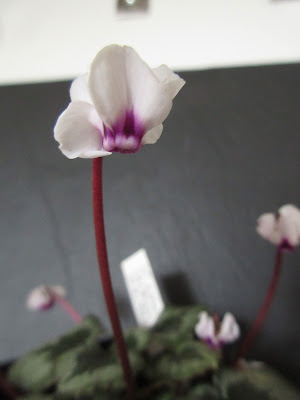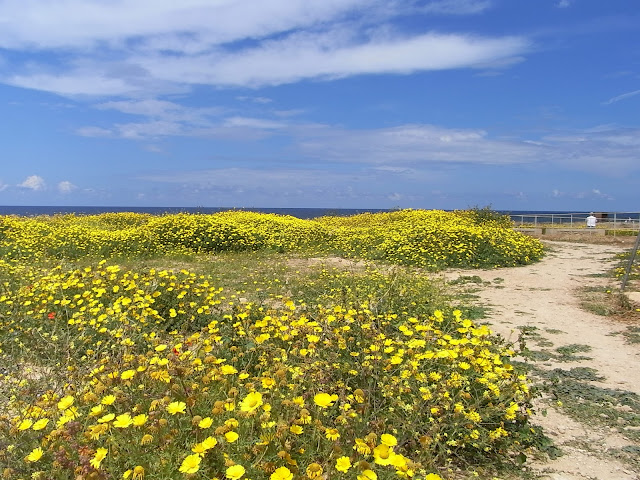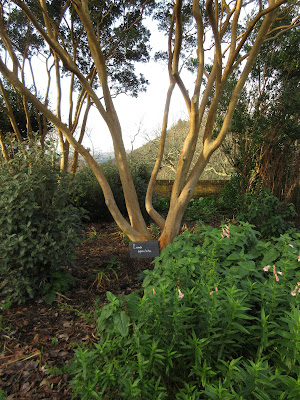When there is little in the garden, I gain pleasure from the form and and structure of shrubs, then enjoy the contrast between deciduous and evergreen plants , and take in the thought that without herbaceous plants dying down I would not be able to enjoy and anticipate new shoots from bulbs and other plants emerging from the winter hybernation, even if they can be a little nibbled.
I suppose I could have picked a few crocuses or snowdrops or cyclamen for In a Vase on Monday. Maybe I ought to have done so, considering we are promised snow this coming week. With a small garden, I can sit in the conservatory and enjoy them easily, and with stone paths I can go out and enjoy the garden without having any grass to walk across.
Just in front of me this morning, as I sat quietly working on a project, was a vase of a sort with something in it:
This is the Crassula Kokedama which Sandra D brought last year. It has never been potted up....and in the picture below it is propped up with some pebbles, just to prove it.
However it is a little unbalanced now and is best in the pot with its garden angel. Sitting and sewing quietly I was pondering the whole recycling thing, and the question of black plant pots. Coming up soon is the period when as a person who can't help but try and propagate things like me, is thinking of what plants to sell on at the gardening club sale. I had the answer before me: I shall offer plants without plastic pots: instead of planting up succulents in pots, I am going to look for moss to make Kokedamas out of them. There is plenty of drainage and lots of air and I can even see the little maze of roots mingling with the moss.
This is the little Crassula nearly a year ago....
The project I am working is being worked on gingham, a simple but delightful crisp and colourful fabric...my first challenge was the hem, such a simple thing I thought. After carefully cutting and pressing the fabric, came the sewing up of the hem. Its ages since I tackled any sewing...at first I thought the hem was reasonable, then looking at it, as on the lower part below, I started to realise that if the white thread was in the white square it would definitely show less, by half was along the second edge, I was happy with the result......
I was positioning the needle to catch a thread along the stronger white line, and finally a nearly invisible stitching line was achieved. Kay who sent me this project would approve...but I am going to leave the hem as it is as reminder to myself of the journey towards a better hem! I can only sew in the very good light in the conservatory. Ever since a little girl I loved gingham.....
Without first looking at Cathy's post which is also all white and green, I can now say snap however hers is definitely not simple but sophisticated. For a little distraction do go and see what see and others are posting this week for In a Vase on Monday.





























































